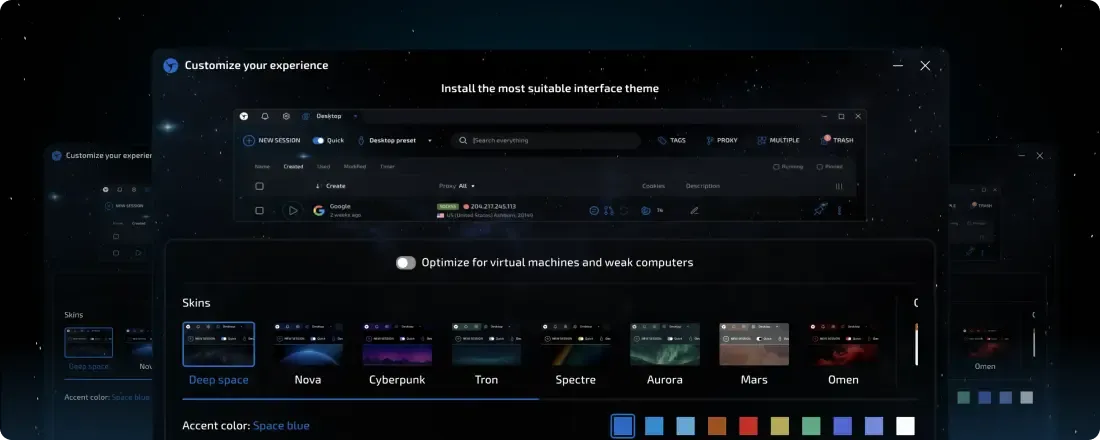
IPv4 or IPv6. Which Better
An address through which any device connects to our computer is called an IP address (Internet Protocol Address). For example, to load a webpage or download a file, we need the address where that file or webpage will be delivered. This address is the IP address.
There are two versions of IP: IPv4 and IPv6. IPv4 is the older version, while IPv6 is the newer one. Both versions have their own features and functions, but they differ in many ways. Understanding these differences helps to realize why we need IPv6 as the internet continues to grow and evolve.

What is an IP Address?
An IP address (Internet Protocol address) is a unique set of numbers assigned to every device connected to a network, such as the internet. You can think of it like the mailing address for your computer, phone, or any other device, allowing them to communicate with one another. When you visit a website, your device uses an IP address to find and connect to the server hosting that site.
Types of IP Addresses
- IPv4 (Internet Protocol Version 4)
- IPv6 (Internet Protocol Version 6)
What is IPv4?
An IPv4 address consists of two parts: a network address and a host address. This version was introduced in 1981 by the DARPA agency and was first used in production networks SATNET and ARPANET in January 1983.
IPv4 addresses are 32-bit numbers written in decimal format. The address consists of four numbers separated by dots, ranging from 0 to 255, which are then converted to binary to be understood by a computer. For example, an IPv4 address might look like this: **189.123.123.90.**
IPv4 Address Format
An IPv4 address is a 32-bit address that consists of binary numbers separated by dots (.).
Example: 192.168.1.1
Disadvantages of IPv4
- Limited address space: IPv4 has a limited number of addresses, which is insufficient for the growing number of devices connecting to the internet.
- Complex configuration: IPv4 often requires manual configuration or the use of DHCP to assign addresses, which can be time-consuming and prone to errors.
- Less efficient routing: IPv4 headers are more complex, which can slow down data processing and routing.
- Security issues: IPv4 lacks built-in security features, making it more vulnerable to attacks unless additional protective measures are added.
- Limited Quality of Service (QoS) support: IPv4 has limited capabilities for prioritizing certain types of data, which can affect performance in real-time applications like video streaming and VoIP.
- Fragmentation: IPv4 allows routers to fragment packets, which can lead to inefficiencies and increase the risk of data loss or corruption.
- Broadcast redundancy: IPv4 uses broadcast messages to communicate with multiple devices on the network, which can create unnecessary network traffic and reduce performance.
What is IPv6?
IPv6 is built on IPv4 and is a newer version of the internet protocol, offering much greater complexity and efficiency. IPv6 was first introduced in December 1995 by the Internet Engineering Task Force. IPv6 is written as a set of 8 hexadecimal numbers separated by colons (:). It is 128 bits long, expressed in binary as 0s and 1s.
IPv6 Address Format
An IPv6 address is a 128-bit IP address, written as a group of 8 hexadecimal numbers separated by colons (:).
Example: ABCD:EF01:2345:6789:ABCD:B201:5482
Several strategies exist for transitioning from IPv4 to IPv6:
- Dual-stack architecture: Devices can use both IPv4 and IPv6 simultaneously, allowing them to interact with networks and devices that use either version.
- Tunneling: This method enables IPv6 users to send data over an IPv4 network to communicate with other IPv6 users. It is like creating a “tunnel” for IPv6 traffic through the older IPv4 system.
- Network Address Translation (NAT): NAT helps devices using different IP versions (IPv4 and IPv6) communicate with each other by translating addresses so they can understand one another.

Advantages of IPv6 Over IPv4
The latest version of IP—IPv6—has several advantages over IPv4:
- Larger address space: IPv6 offers a much larger address space compared to IPv4, which is necessary to accommodate the growing number of IP-connected devices. IPv6 uses a 128-bit address, while IPv4 uses a 32-bit one.
- Enhanced security: IPv6 includes improved security features such as data authentication and encryption, making internet connections more secure.
- Simplified header format: Compared to IPv4, IPv6 has a simpler and more efficient header format, reducing overhead and improving internet connection speeds.
- Prioritization: IPv6 offers more robust and reliable QoS features, which help improve traffic on websites and enhance audio and video quality.
- Improved mobile support: IPv6 better supports mobile devices, offering faster and more secure connections.
Conclusion
In short, IPv4 and IPv6 are two versions of the internet protocol used to identify devices on a network. IPv6 is the newer version, offering many improvements over IPv4, such as a much larger address space, better security, and more efficient routing. However, IPv4 is still widely used, and the transition to IPv6 is ongoing. The main difference is that IPv6 can handle far more devices, which is critical as the number of internet-connected devices continues to grow.

Using LS with OBS Studio
This is a comprehensive guide that will help you implement video stream substitution in Linken Sphere without the risk of detection by anti-fraud systems.

GermanProxy.io Review: Mobile Proxies Optimized for Linken Sphere
While large proxy providers focus on massive IP pools and broad geographic coverage, niche services can offer more tailored and exclusive options. If your workflow is tied to a specific GEO, specialized proxy providers are often the better choice — delivering better speed, higher quality, and lower cost.

Flagship and Landmark
What is the determining factor in the quality of a product and the right vector for its development? The answer is obvious - when it is copied. Especially when it comes to copying by teams that have dominated the market for several years in a row, being in a completely relaxed state. We have invested a lot of intelligence and attention to detail into the new Linken Sphere. Since the release of the 9th generation, we have all seen how the market has moved. As a rule, we do not focus specific attention on the fact that certain decisions are being snooped on us, because this is inevitable. Most competitors try to implement the copied functionality in a modified form, following the already established architecture and traditions of their own design.